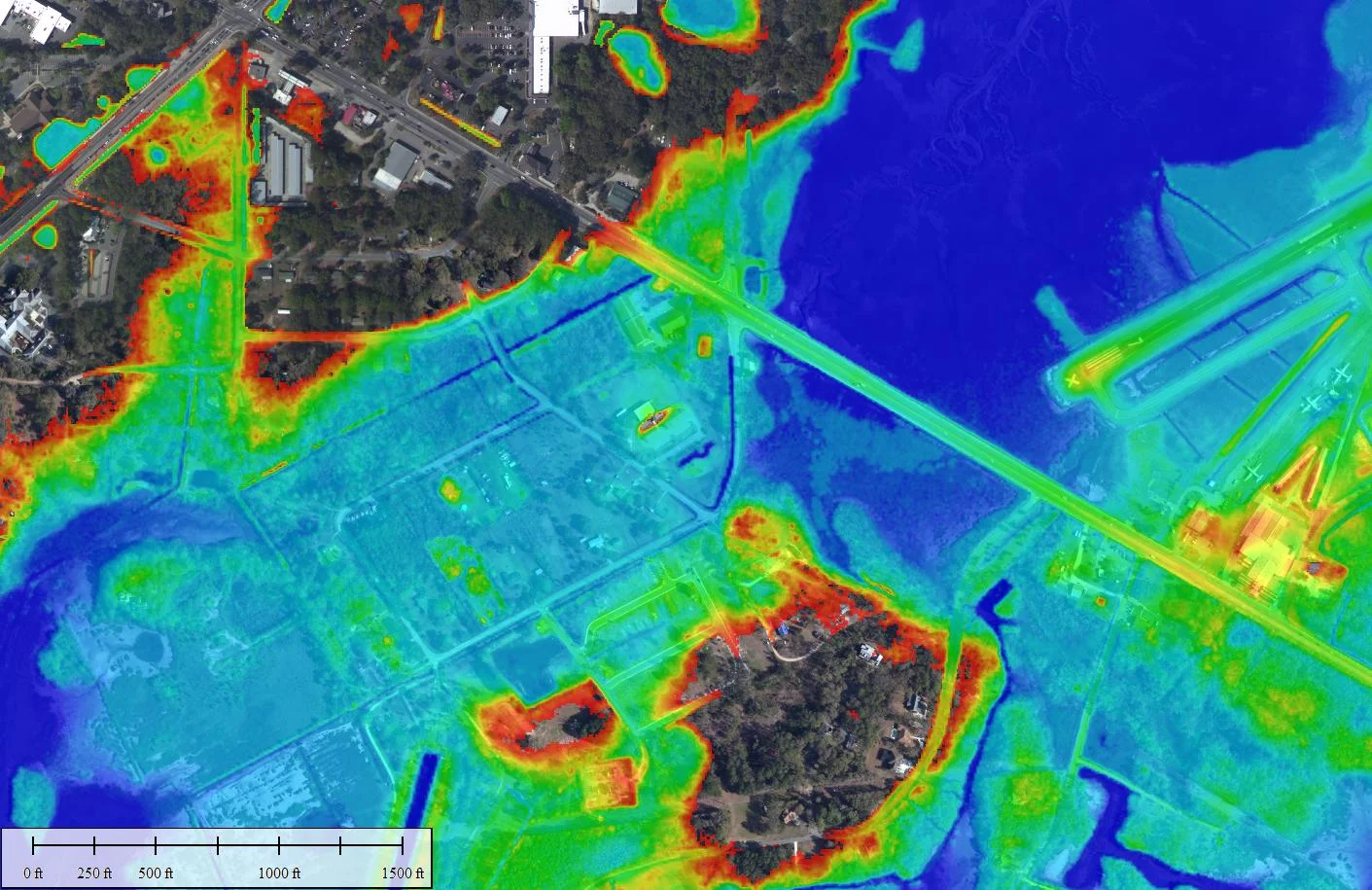Mapping and GIS

GIS is a convenient and cost effective way to combine and analyze a wide variety of information from various sensors and inputs. GSC has developed the use of GIS on a many different projects and at various scales from miles to millimeters. We have experience with, and can provide data and information, in all common GIS formats to streamline client application and efficiency.
Some of our services include:
- Custom spatial database development
- Generation of spatial data layers
- Geospatial analysis of existing data layers
- Preparation of custom graphics and conversion of various formats
Mapping/GIS Projects
Resilience analysis and design for coastal flooding sources at interchange leading to Marine Base Parris Island.
Geoscience worked with Sherwood Design Engineers to provide a host of flooding risk information, including pluvial (rain), shallow coastal, and tropical storms.
This study details the degree that the forested and palustrine forest floodplains along the Black, Waccamaw and the Pee Dee Rivers are contributing to lower flooding for crops and infrastructure in the basins.
This pilot study examined the water storage/flood resiliency value of lands upstream of urban/suburban centers under riverine dominated flooding. The goal was to develop a process that could be applied to other areas in the Southeast US.
Geoscience Consultants worked with the Lowcountry Council of Governments (LCOG) in developing a forward looking watershed management plan for five watersheds in the Lower Savannah. The area is directly adjacent to a major freshwater withdrawal that provides water to hundreds of thousands of people.
This project focused on identifying the potential infrastructure problems that will exist as sea level rise (SLR) occurs and determining how those effects can be minimized or mitigated to ensure that the needs of both the local communities and the military facilities are accommodated. This is particularly significant in the Beaufort area due to the fact that water and sewer services are provided to the military facilities by the same regional provider that serves the local communities; and local roads, highways and bridges provide the only access to MCAS Beaufort and MCRD Parris Island.
Geoscience Consultants was hired to examine sediment transport into a local navigational channel. The study revealed that a cause of the siltation in the channel was actually a lack of sediment. This study highlights the intertwined nature of coastal habitats and human use.
Geoscience Consultants generated time-based inundation risk map outputs of present and future (up to 2100) inundation from SLR at mean higher high water, shallow coastal flooding, category 1 hurricanes, and still-water annual storm surge in the Salem Sound Coastwatch communities of Northeast Massachusetts.
Geoscience worked as a subcontractor for the NOAA Office for Coastal Management on an accuracy assessment of the Benthic mapping of San Francisco Bay. The work included comparison of draft benthic map results with temporal imagery and in situ measurements of benthic vegetation and littoral land cover.










The North Coast project in Georgetown and Horry Counties (SC) grew from TNC’s Coast Summit in 2016 where riverine flooding was highlighted as a problem that held opportunity for nature based mitigation projects. Geoscience Consultants was hired to provide an understanding of localized flood risk at present and under future climate change. This information will help community stakeholders identify locations where green infrastructure can be used to mitigate increasing flooding issues.